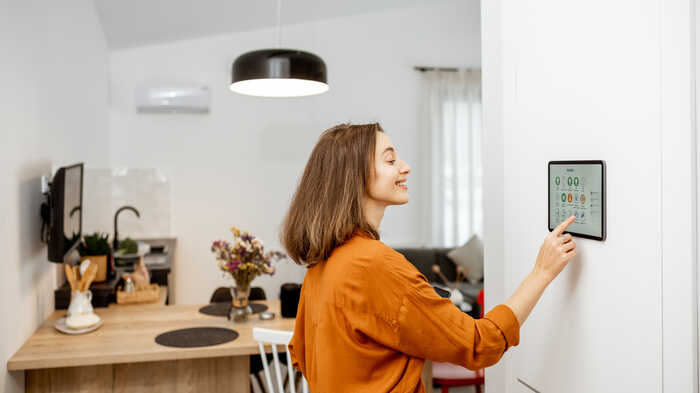How Modern Architecture Evolves With Technological Advancements
The evolution of modern architecture often goes hand in hand with the potential to embrace technological advancement in design and space planning projects. As well as aesthetic innovation, technology has the ability to change how buildings interact with their environment and its occupants.
Indeed, architecture is in the midst of a transformative era thanks to cutting-edge technological advancements; innovations that are shaping the way in which we approach both commercial and residential housing projects, from modest renovations to ambitious new builds.

The digital revolution in design
One of the most significant technological leaps in architecture has been the adoption of digital tools like Building Information Modeling (BIM). BIM has transformed architecture, allowing designers to create detailed digital representations of buildings, which include both the physical and intrinsic properties of building components. This technology lends itself to better decision-making throughout the construction process, improving coordination among professionals, and significantly reducing construction waste and cost overruns.
Sustainability at the core
Sustainable design has become a significant consideration in modern architecture, driven by a global imperative to reduce our environmental footprint. Technological advancements have paved the way for sustainable solutions that integrate seamlessly into architectural designs. Solar panels, green roofs, and rainwater harvesting systems are now common features that contribute to a building's energy efficiency and environmental sustainability.

The advancement of materials
The development of new materials has also played a pivotal role in modern architecture. Innovations such as self-healing concrete, which repairs its own cracks, and transparent aluminium, which combines the strength of metal with the transparency of glass, are redefining the limits of construction and design. These materials can offer enhanced durability, aesthetic flexibility, and contribute to the energy efficiency and sustainability of buildings.
In the UK, projects like the 'Murray Grove' in London highlight the potential of modern timber frame construction, showing how quick, clean, and efficient building methods can lead to stunning and sustainable residential buildings. Similarly, the 'Eco House' in Wales illustrates how combining traditional design elements with modern technology can result in homes that are both environmentally friendly and uniquely tailored to individual lifestyles.

Smart buildings
The integration of smart technology into architectural design has given rise to buildings that are more responsive to the needs of their occupants. Smart buildings use IoT (Internet of Things) devices and systems to control lighting, heating, cooling, and security, optimising energy use and enhancing the comfort and safety of inhabitants. The Edge in Amsterdam is a prime example, often cited as one of the world's smartest and most sustainable buildings, setting a benchmark for future constructions.
Real-world innovations
Innovative projects around the globe showcase the transformative impact of technology on architecture. The use of 3D printing in construction, seen in the Gaia house, underlines the potential for reducing material waste and construction time. Meanwhile, the dynamic façade of the Al Bahr Towers in Abu Dhabi, which adjusts in response to the sun's movement, is a great example of traditional design elements integrated with modern technology to achieve energy efficiency.

How can we help?
The evolution of modern architecture through technological advancements offers a glimpse into a future where buildings can interact with their environment and users. As design and space planning architects and engineers continue to push the boundaries of what is possible, we can expect to see further innovations that will redefine our physical spaces, making them more sustainable, efficient, and in tune with the needs of future generations.
If you''re feeling inspired by today's post, or would like to see how you can incorporate technology and innovative design into your new build project, please get in touch or book a free video consultation.
Posted on February 21st 2024

